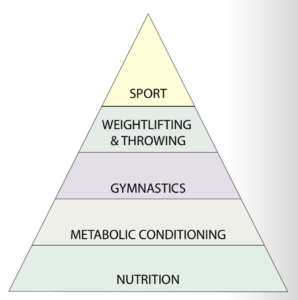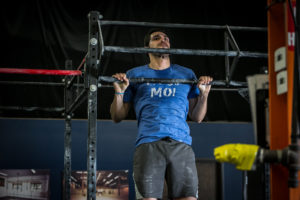In 2012 I was hired to coach a swim team of 300 kids. Over the course of 3.5 hours, we’d run kids 5-18 through 6 different practices. While structuring the training, sets, and workout for the day was in my wheelhouse, I often drove home with an anxious feeling about the lack of time we had spent on starts, turns, or other particulars of the race beyond the actual swimming part.
Luckily, I was fortunate to work with a great team of coaches, one of whom suggested that we assign a specific skill to each day of the week to work on and develop (thanks Melissa). We’d save the last ten minutes of each practice to work on that skill exclusively. We spent that afternoon selecting five different elements that would give our kids the edge – starts, finishes, freestyle and backstroke flip turns, breaststroke and butterfly turns, and relay starts.
The consistency around this method of practice led to some of the best relay starts in the league, confidence from our kids in their ability to race, and improvement that continued over four years. Fast forward to 2012 and I had a similar feeling (anxiety) around preparing my athletes for The Open each year. And so CrossFit Roots’ incorporation of daily skill work was born.
In our final installment of How to Run an Effective Class Structure, we’ll cover why and how to incorporate skill work into the class hour effectively.
CrossFit often reminds us to work our weaknesses; however, our clients also have jobs, lives, kids, and other shit to do, which for most of us limits our time in the gym to exactly one hour (and we don’t think that’s a bad thing for such a high level of fitness!). There are many great reasons to incorporate skill work within the hour, and with a little effort, you can make it a seamless part of the hour that drives development in all athletes, no matter their current capacity.
How Does it Work?
CrossFit Roots selected five skills to work on and incorporate. We chose the first four because of their presence in the CrossFit Open. We decided on rope climbs because they’re just plain cool and every athlete feels accomplished when they learn to climb a rope – much less incorporate them into a workout. Besides, while we had ropes, they were always tied up and out of the way. If we didn’t build in a specific structure to use them, no one was ever going to learn to climb a rope outside of the occasional times they come up in a workout.
CrossFit Roots’ Current Skill Work – 2017
- Toes-to-bar
- Muscle-up
- Chest-to-bar Pull-ups
- Handstand Push-ups
- Rope Climbs
One of the other coaches at Roots, Shane Upchurch, and I fit in and design the skill work in two-week increments. The skill work rolls out mostly on a set rotation although we have to be cognizant of the workouts and movement patterns so on occasion we might change the order.
Providing appropriate scaling options for each skill piece is paramount to athletes’ buying into the effort. If an athlete does not have a handstand push-up and is not coached in skill work on what to do to achieve one, they will not feel they are being cared for as an athlete. On the flip side, if an athlete starts handstand push-ups in Year 1 on a box, is coached to their level as they improve, and three years later can do one on the wall, this becomes a point of reference for other athletes to see what is possible.
Why Incorporate Skill Work
1. It’s important to athletic development.
The nature of the skills is gymnastics-based and this emphasizes the ordering of the CF Pyramid.

Source: CrossFit Journal, October 2002
Many gyms skip this ordering and focus on weightlifting, but without proper attention to developing the base of athletic capacity, we open the door for injury, frustration, poor movement quality, and plateau. By spending 50 minutes per week on the basics, we address the injury, frustration, and poor movement as well as send a message to our athletes about the type of development we aim to foster.
2. It ensures the work actually gets done.
Everyone wants a muscle-up. It’s one thing as coaches to expect people work on the development of a skill – but it’s a huge assumption to think that they know “how” and feel confident to do it. As coaches, we need to lead them! In addition, your athletes might not have the vision that this daily effort will help them 2 years down the road – but you do.
When assigned to do on their own, after the workout, many athletes will leave, not complete all of it, or have time for it. They signed up for one hour, not more than that. There is time in a well-run hour to get in a workout and coached skill work.
3. It drives quality of the effort.
When skill work is done in class, under the watchful eye of a coach and amongst peers, athletes will dramatically increase the effort they put into the task, compared to when they work alone in the corner of the gym. More consistent quality efforts drive more improvement and results over time.
4. Skill work contributes to a better placing in The Open.
It seems like every conversation I have with affiliate owners somehow includes a statement on strength, such as, “Yea, my gym needs to get stronger, so we do strength 4 days a week.”
Referring back to the CrossFit pyramid I quickly chuckle and say, “Oh, wow, so everyone at your gym can walk on their hands and has muscle-ups!?”
If our goal is general physical preparedness and being a well-rounded athlete, and we use The CrossFit Open as our evaluation system, we find that emphasizing lifting at the expense of gymnastics skills does not deliver the best results for sport or fitness.
Consider two examples:
In Scenario 1, the athlete finishes The Open and commits to getting stronger the following year to do better in The Open. After a year of training, they have increased all of their lifts by 10-30 pounds.
When The Open comes, the 22 pounds they put on their deadlift, doesn’t seem to make the 55 reps at
225/155 that they must complete that much easier. Their placing from 2016 to 2017 worldwide is about the same.
In Scenario 2, the same athlete finishes The Open and commits to getting a muscle-up in the next year. They spend a year developing a muscle-up.
When The Open comes around, they have 1 muscle-up, where the year before they had 0. They complete 2 muscle-ups in The Open and jump 2,000 places up the leaderboard simply by getting a few reps of a movement that the majority of athletes cannot do. Getting a few more deadlifts out of 55 total, will not jump an athlete 2,000 places.
5. It adds reps to the Lifetime Rep Bank
Gymnastic skills, just like any other capacity, take consistent, focused practice over many years to develop. Build it into the daily routine for your members. With our skill work, athletes are completing over 1500 reps of each movement over the course of a year in a well-paced and evolving fashion. This consistent exposure drives a safe development of more complex skills.
6. It’s Fun!
Athletes enjoy this time as the overall intensity is lower than a workout, they can socialize a bit, cheer each other on, and leave the shop feeling an extra sense of accomplishment.
How to Incorporate This into Your Gym:
1. Write out five skill sessions for the five different skills. We recommend repeating the same skill work each week for one month. This allows athletes to evaluate progress and also progressively saves time in coach explanation as people are familiar with it after the first week. Examples listed below.
2. Write your WOD Plan such that score collection wraps up 10 minutes prior to the end of class.
3. Structure skill work such that it incorporates 20-50 reps of a skill.
4. Provide scaling options for EVERYONE. Provide a path for everyone to work toward the goal. This is very important – if you want athletes to commit to the skill work, you have to present options that challenge everyone at their current level.
5. Use a clock or other system to keep it organized and on-pace, otherwise, folks will run over on the hour and not complete.
An Example of One Month of Skill Work
Rope Climb
Max legless rope climbs in 4:00 minutes, broken.
Score: Total climbs completed.
- Minute 1: Climb, Minute 2: Rest, Minute 3: climb, Minute 4: rest…continue for 8 minutes)
- Can be done legless, with feet, or 1/2 climbs but stick to one variation throughout.
- For athletes learning to climb a rope, work on seated box foot work (Seated box footwork video HERE).
Toes-to-Bar
Tabata Arch and Hold
Score: Total intervals held for full :20 seconds.
- Athletes will perform 8 sets of each movement switching back and forth between each movement. As an example, athletes will hold :20 arch, followed by :10 rest, followed by :20 hollow and proceed through until the athlete has completed 16 intervals total. This will take 8 minutes.
- Arch video example.
- Hollow video example.
Handstand Push-ups
15-12-9 strict handstand push-ups, rest 2:00 minutes between rounds.
Score: Total time to complete.
- Can be done deficit, to the floor, from a box in pike position or on knees.
Muscle-ups
5-4-3-2-1 reps of strict muscle-ups. Rest as needed between sets.
Score: Record scaled option and number of sets to complete.
- Scaled options include 2-2-2-2-2 strict muscle-ups or utilizing a band for seated transition (no heaving).
- Seated transition video example.
Chest-to-Bar Pull-ups
4×5 Strict C-2-B pull-ups
Score: Number of sets to complete.
- The scaled option is to use a kid’s pull-up bar and perform chest-to-bar rows. Make more challenging by increasing angle of pulling motion or elevating feet.
Download the full “Lessons for the Coaches at the Gym” eBook here.
